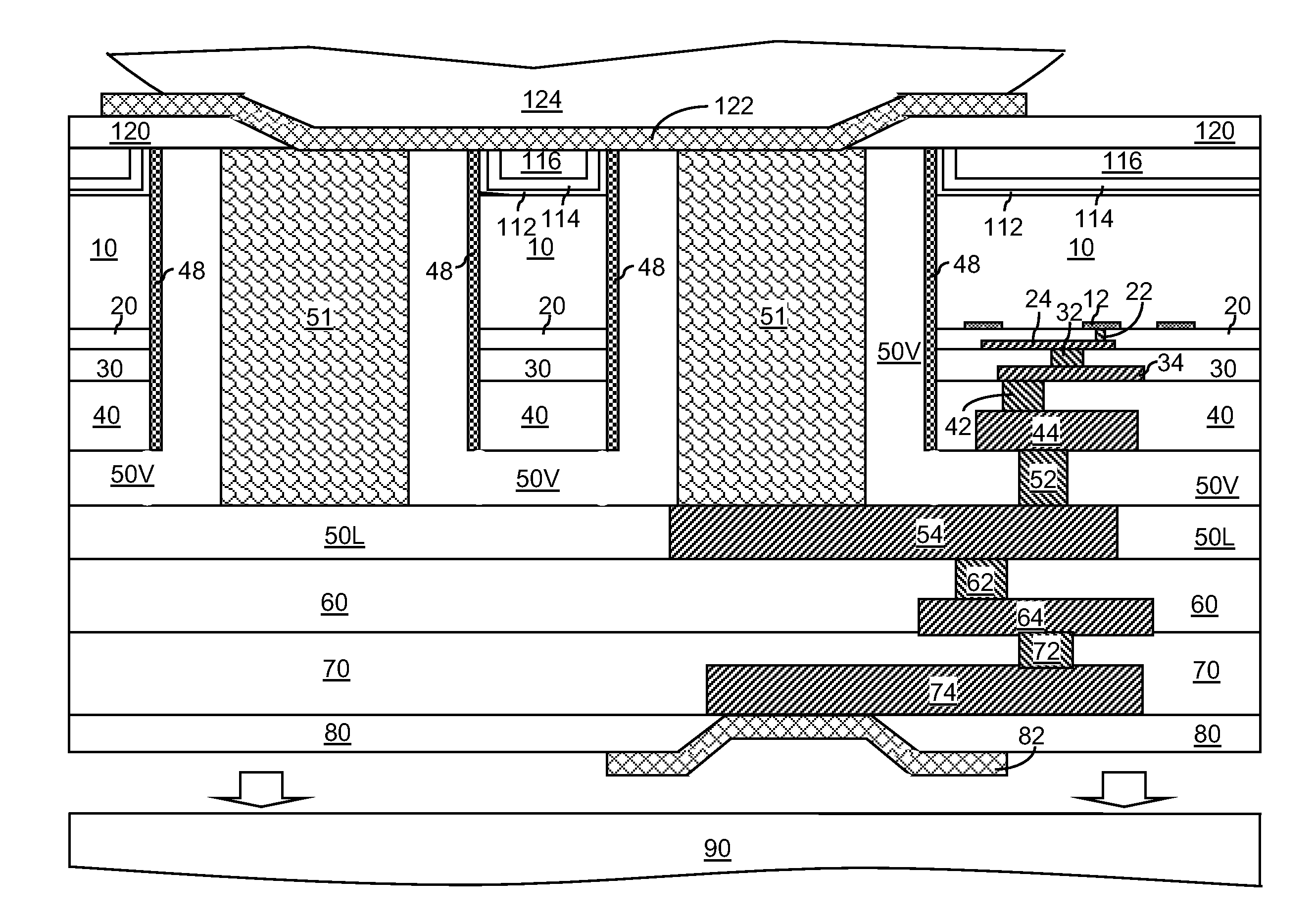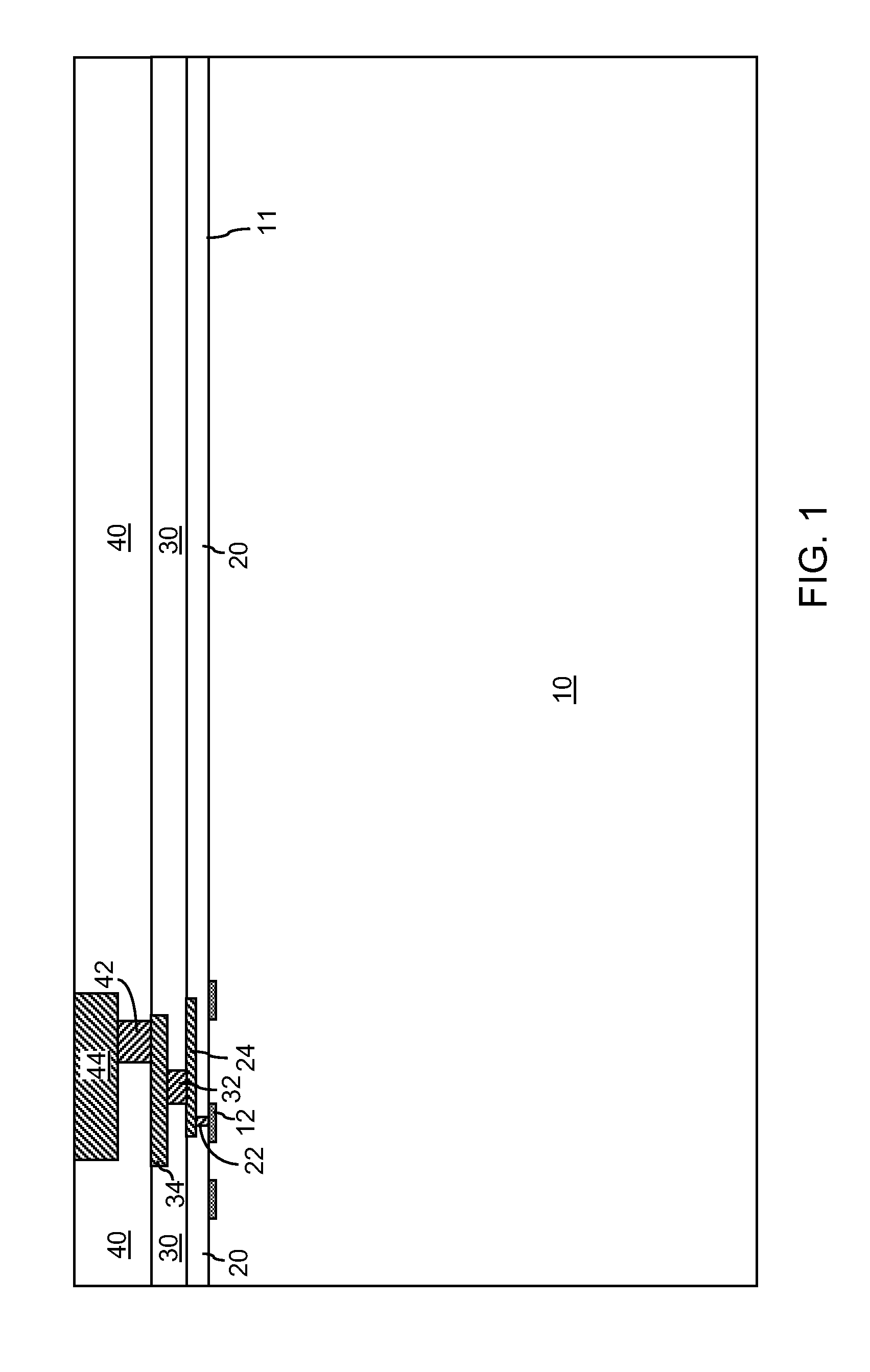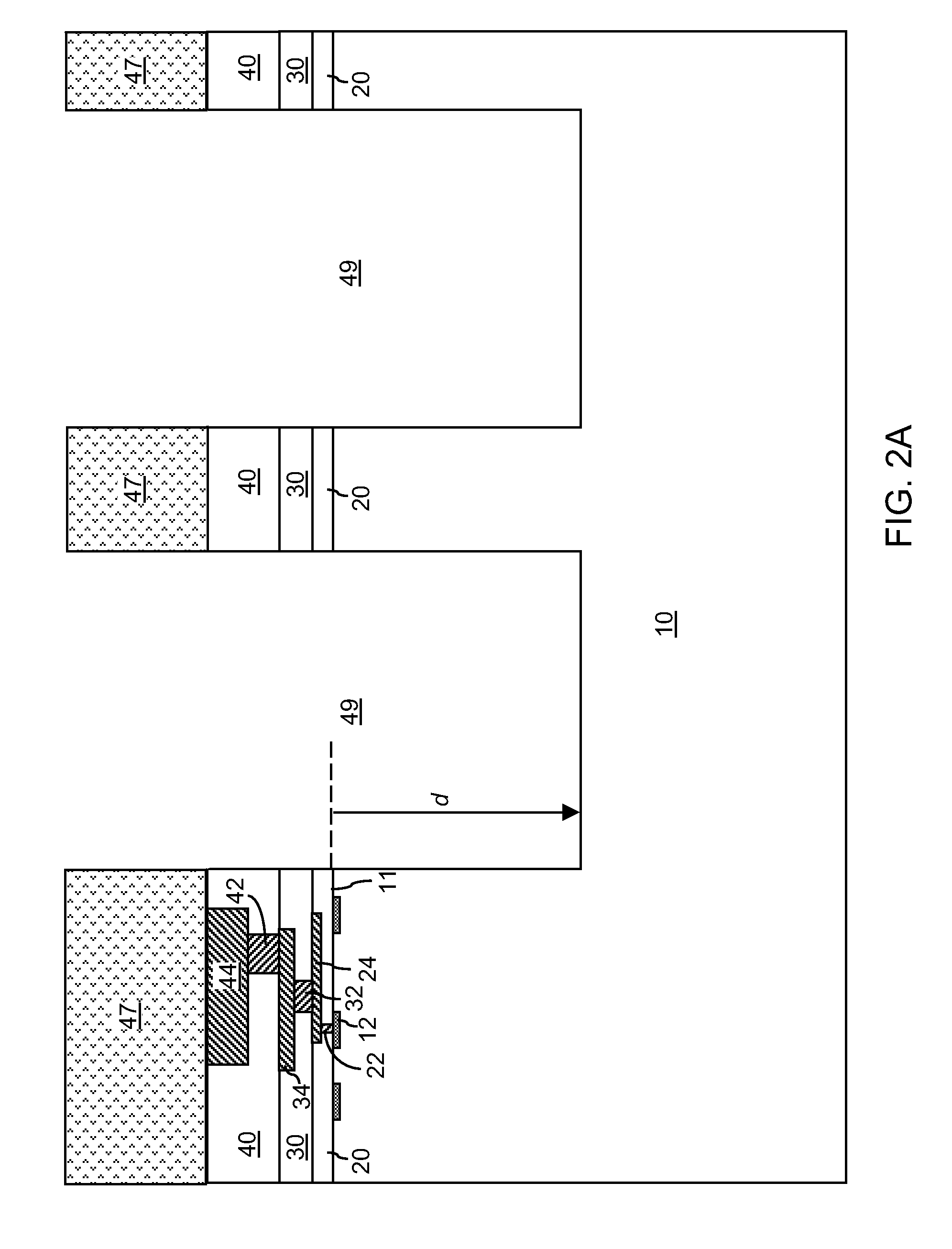Metal-contamination-free through-substrate via structure
a technology of through-substrate and metal contamination, which is applied in the direction of semiconductor/solid-state device details, semiconductor devices, electrical apparatus, etc., can solve the problems that the diffusion of residual copper material into the semiconductor material can create detrimental effects, and the silica oxide dielectric liner does not prevent the diffusion of metallic materials
- Summary
- Abstract
- Description
- Claims
- Application Information
AI Technical Summary
Benefits of technology
Problems solved by technology
Method used
Image
Examples
Embodiment Construction
[0025]As stated above, the present disclosure relates to metal-contamination-free through-substrate via structures and methods of manufacturing the same, which are now described in detail with accompanying figures. Throughout the drawings, the same reference numerals or letters are used to designate like or equivalent elements. The drawings are not necessarily drawn to scale.
[0026]As used herein, a “conductive through-substrate via (TSV) structure” is a conductive structure that extends through a substrate, i.e., at least from a top surface of the substrate to a bottom surface of the substrate.
[0027]As used herein, a surface is “substantially planar” if the surface is intended to be planar and the non-planarity of the surface is limited by imperfections inherent in the processing steps that are employed to form the surface.
[0028]As used herein, a “mounting structure” is any structure to which a semiconductor chip can be mounded by making electrical connections thereto. A mounting st...
PUM
| Property | Measurement | Unit |
|---|---|---|
| depth | aaaaa | aaaaa |
| depth | aaaaa | aaaaa |
| radius | aaaaa | aaaaa |
Abstract
Description
Claims
Application Information
 Login to View More
Login to View More - R&D
- Intellectual Property
- Life Sciences
- Materials
- Tech Scout
- Unparalleled Data Quality
- Higher Quality Content
- 60% Fewer Hallucinations
Browse by: Latest US Patents, China's latest patents, Technical Efficacy Thesaurus, Application Domain, Technology Topic, Popular Technical Reports.
© 2025 PatSnap. All rights reserved.Legal|Privacy policy|Modern Slavery Act Transparency Statement|Sitemap|About US| Contact US: help@patsnap.com



